Growing string beans can be incredibly rewarding, offering a fresh, delicious harvest right from your own backyard! Have you ever imagined stepping outside and picking crisp, tender string beans for dinner, knowing exactly where they came from and how they were grown? That’s the magic of home gardening, and it’s more accessible than you might think.
For centuries, cultivating beans has been a staple in gardens worldwide. From ancient civilizations to modern-day homesteaders, the humble string bean has provided sustenance and flavor. In many cultures, beans symbolize prosperity and growth, reflecting their ease of cultivation and abundant yields. I think that’s pretty cool!
But let’s be honest, sometimes growing string beans can feel a little daunting. Pests, diseases, and unpredictable weather can all throw a wrench in your plans. That’s where these DIY tricks and hacks come in! I’m going to share some simple, effective strategies to help you overcome common challenges and maximize your harvest. Whether you’re a seasoned gardener or just starting out, these tips will empower you to grow healthy, productive string bean plants. Get ready to enjoy a bountiful supply of homegrown goodness!
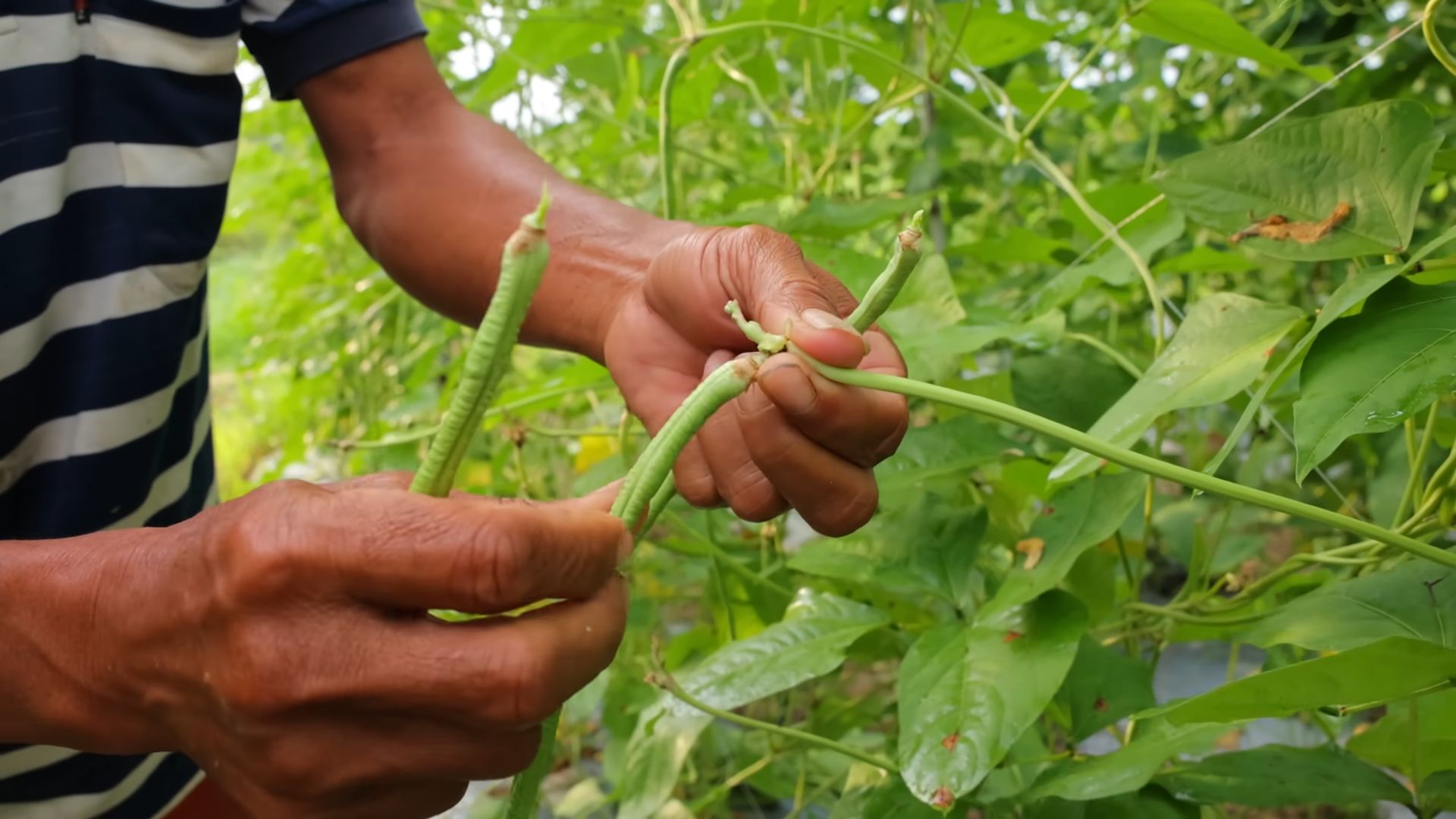
DIY: From Seed to Supper – Growing String Beans Like a Pro!
Hey there, fellow garden enthusiasts! I’m so excited to share my tried-and-true method for growing string beans. It’s easier than you might think, and nothing beats the taste of fresh, homegrown beans. This guide will walk you through every step, from choosing the right variety to harvesting a bountiful crop. Let’s get our hands dirty!
Choosing Your String Bean Variety
Before we even think about planting, let’s talk beans! There are two main types: bush beans and pole beans.
* **Bush Beans:** These are compact and don’t need support. They’re perfect for smaller gardens or containers. They produce a large harvest all at once, which is great for canning or freezing. Some popular varieties include ‘Blue Lake Bush,’ ‘Contender,’ and ‘Provider.’
* **Pole Beans:** These are vining beans that need a trellis or other support to climb. They produce beans over a longer period, giving you a steady supply throughout the season. ‘Kentucky Wonder,’ ‘Scarlet Runner,’ and ‘Fortex’ are excellent choices.
I personally love growing both! Bush beans for a quick harvest and pole beans for continuous snacking. Consider your garden space and how you plan to use your beans when making your decision.
Preparing Your Garden Bed
String beans are pretty forgiving, but they’ll thrive in well-drained soil with plenty of sunshine. Here’s how to get your garden bed ready:
* **Sunlight:** String beans need at least 6-8 hours of direct sunlight per day. Choose a spot in your garden that gets plenty of sun.
* **Soil:** The ideal soil for string beans is loose, well-draining, and rich in organic matter. If your soil is heavy clay or sandy, amend it with compost or well-rotted manure.
* **pH:** String beans prefer a soil pH between 6.0 and 7.0. You can test your soil pH with a home testing kit or send a sample to your local agricultural extension office.
* **Weed Removal:** Clear the area of any weeds, grass, or debris. Weeds compete with your beans for nutrients and water.
Planting Your String Beans
Now for the fun part – planting! Here’s a step-by-step guide:
1. **Timing is Key:** String beans are warm-season crops, so wait until the danger of frost has passed before planting. Soil temperature should be at least 60°F (15°C). I usually plant mine a week or two after the last expected frost.
2. **Direct Sowing:** String beans are best direct-sown, meaning you plant the seeds directly into the garden. They don’t transplant well.
3. **Spacing:**
* **Bush Beans:** Plant seeds 1-2 inches deep and 2-4 inches apart in rows that are 18-24 inches apart.
* **Pole Beans:** Plant seeds 1-2 inches deep and 4-6 inches apart at the base of your trellis or support structure.
4. **Watering:** After planting, water the soil gently but thoroughly. Keep the soil consistently moist until the seeds germinate.
5. **Germination:** String bean seeds usually germinate in 5-10 days, depending on soil temperature and moisture.
Building a Trellis for Pole Beans
If you’re growing pole beans, you’ll need a trellis or other support structure for them to climb. Here are a few options:
* **Bamboo Stakes:** Simple and inexpensive, bamboo stakes can be arranged in a teepee shape or used to create a vertical trellis.
* **Netting:** Attach netting to posts or a fence to create a climbing surface for your beans.
* **Wire Mesh:** A sturdy and durable option, wire mesh can be used to build a freestanding trellis.
* **DIY Trellis:** Get creative and build your own trellis using reclaimed wood, branches, or other materials.
I personally love using bamboo stakes because they’re readily available and easy to work with. Here’s how I build a simple teepee trellis:
1. **Gather Materials:** You’ll need 4-6 bamboo stakes, twine, and scissors.
2. **Arrange Stakes:** Push the stakes into the ground in a circle, spacing them evenly apart.
3. **Tie the Top:** Gather the tops of the stakes together and tie them securely with twine.
4. **Add Horizontal Supports (Optional):** For extra support, you can tie horizontal pieces of twine around the stakes at intervals.
Caring for Your String Beans
Once your string beans are up and growing, here’s how to keep them happy and healthy:
* **Watering:** Water regularly, especially during dry spells. String beans need about 1 inch of water per week. Water at the base of the plants to avoid wetting the foliage, which can lead to fungal diseases.
* **Weeding:** Keep the area around your beans free of weeds. Hand-pull weeds or use a hoe to cultivate the soil gently.
* **Fertilizing:** String beans don’t need a lot of fertilizer, but a side dressing of compost or a balanced fertilizer (like 10-10-10) can help boost growth. Apply fertilizer according to package directions. I usually fertilize mine about a month after planting.
* **Pest Control:** Keep an eye out for common string bean pests like aphids, bean beetles, and spider mites. You can control these pests with insecticidal soap, neem oil, or by hand-picking them off the plants.
* **Disease Prevention:** To prevent fungal diseases, avoid overhead watering and ensure good air circulation around your plants. If you notice any signs of disease, remove the affected leaves or plants immediately.
Harvesting Your String Beans
The moment we’ve all been waiting for – harvesting! Here’s how to know when your string beans are ready to pick:
* **Timing:** String beans are usually ready to harvest 50-60 days after planting.
* **Appearance:** The beans should be firm, crisp, and brightly colored. They should snap easily when bent.
* **Size:** The ideal size for harvesting depends on the variety, but generally, beans should be 4-6 inches long.
* **Frequency:** Harvest your beans regularly, every few days, to encourage continued production.
* **Technique:** Gently snap the beans off the plant, being careful not to damage the stems or leaves.
I love to eat my string beans fresh from the garden, but they’re also delicious steamed, sautéed, or added to soups and stews. You can also freeze or can them for later use.
Troubleshooting Common Problems
Even with the best care, you might encounter a few problems when growing string beans. Here are some common issues and how to address them:
* **Poor Germination:** If your seeds aren’t germinating, the soil may be too cold or too wet. Make sure the soil temperature is at least 60°F (15°C) and avoid overwatering.
* **Yellowing Leaves:** Yellowing leaves can be a sign of nutrient deficiency, overwatering, or disease. Check the soil drainage and fertilize if necessary.
* **Lack of Flowers or Beans:** If your plants are growing well but not producing flowers or beans, they may not be getting enough sunlight or phosphorus. Make sure they’re getting at least 6 hours of direct sunlight per day and fertilize with a phosphorus-rich fertilizer.
* **Pest Infestations:** As mentioned earlier, keep an eye out for common string bean pests and take action to control them promptly.
* **Disease:** Prevent fungal diseases by avoiding overhead watering and ensuring good air circulation. Remove any affected leaves or plants immediately.
Saving Seeds for Next Year
If you want to save seeds from your string beans for next year, here’s how:
1. **Choose Healthy Plants:** Select healthy, vigorous plants that produce high-quality beans.
2. **Allow Beans to Mature:** Let some of the beans on the plant mature fully. They will become dry and brown.
3. **Harvest the Pods:** Once the pods are completely dry, harvest them from the plant.
4. **Shell the Seeds:** Open the pods and remove the seeds.
5. **Dry the Seeds:** Spread the seeds out on a tray and let them dry completely in a cool, dry place for a few weeks.
6. **Store the Seeds:** Store the dried seeds in an airtight container in a cool, dark place. They should remain viable for several years.
Growing string beans is a rewarding experience that anyone can enjoy. With a little planning and care, you can harvest a bountiful crop of fresh, delicious beans from your own garden. Happy gardening!
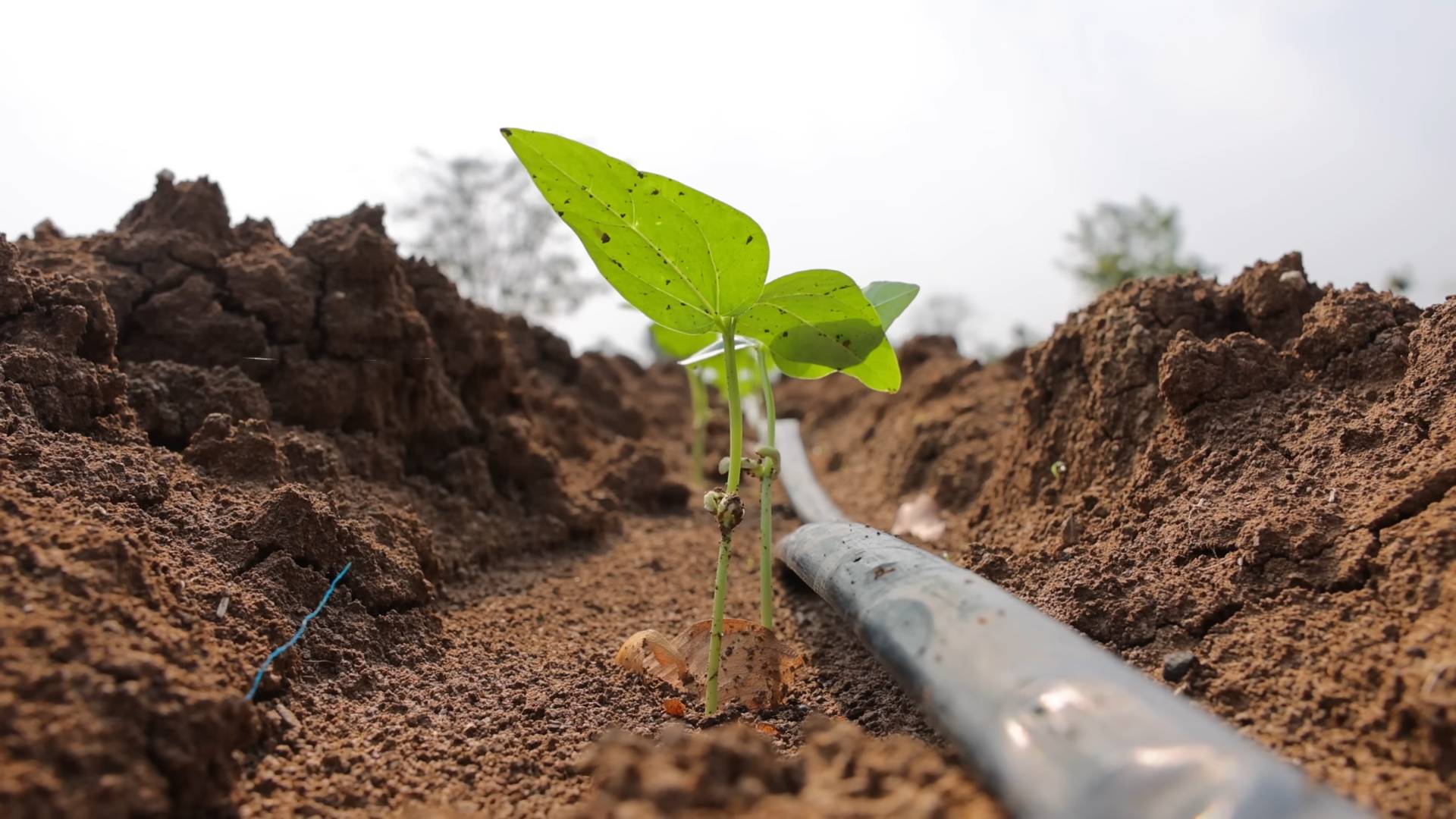
Conclusion
So, there you have it! Growing string beans at home, especially using our simple DIY trick, is not just a gardening activity; it’s an investment in fresh, flavorful, and healthy eating. We’ve shown you how to bypass some of the common pitfalls and maximize your yield, even if you’re working with limited space or experience.
Why is this DIY method a must-try? Because it’s efficient, cost-effective, and incredibly rewarding. Imagine stepping out into your garden and harvesting crisp, tender string beans whenever you need them. No more trips to the grocery store for subpar produce that’s been sitting on the shelf for days. You’ll have the freshest, most delicious string beans imaginable, ready to be steamed, sautéed, pickled, or added to your favorite dishes.
But the benefits extend beyond just taste and convenience. Growing your own food connects you to the natural world, reduces your carbon footprint, and provides a sense of accomplishment that’s hard to beat. Plus, it’s a fantastic way to get some exercise and fresh air.
Ready to take your string bean game to the next level?
Here are a few suggestions and variations to consider:
* Teepee Trellis: Instead of a simple trellis, create a teepee structure for your string beans to climb. This adds a visually appealing element to your garden and provides ample support for the vines.
* Succession Planting: Plant new seeds every few weeks to ensure a continuous harvest throughout the growing season. This is especially useful if you have a large family or enjoy eating string beans regularly.
* Companion Planting: Plant marigolds or nasturtiums near your string beans to deter pests. These flowers are natural insect repellents and can help keep your plants healthy.
* Different Varieties: Experiment with different varieties of string beans, such as bush beans, pole beans, or even purple string beans. Each variety has its own unique flavor and texture.
* Container Gardening: If you don’t have a garden, you can still grow string beans in containers. Just make sure to choose a large enough pot and provide adequate support for the vines.
We’re confident that with a little effort and our DIY trick, you’ll be enjoying a bountiful harvest of delicious string beans in no time. Don’t be afraid to experiment and adapt the method to suit your specific needs and preferences.
Now it’s your turn! We encourage you to try our DIY trick for growing string beans and share your experience with us. Let us know what worked well for you, what challenges you faced, and any tips or tricks you discovered along the way. Your feedback will help us improve our method and inspire other gardeners to give it a try. Share your photos and stories on our social media channels using #DIYStringBeans. We can’t wait to see your amazing results! Happy gardening!
Frequently Asked Questions (FAQ)
What kind of soil is best for growing string beans?
String beans thrive in well-drained soil that is rich in organic matter. A slightly acidic to neutral pH (around 6.0 to 7.0) is ideal. Before planting, amend your soil with compost or well-rotted manure to improve its fertility and drainage. If your soil is heavy clay, consider adding sand or perlite to improve drainage. A soil test can help you determine the exact pH and nutrient levels of your soil.
How often should I water my string beans?
String beans need consistent moisture, especially during flowering and pod development. Water deeply and regularly, aiming for about 1 inch of water per week. Avoid overhead watering, as this can promote fungal diseases. Instead, water at the base of the plants. Check the soil moisture regularly by sticking your finger into the soil. If the top inch feels dry, it’s time to water. Mulching around the plants can help retain moisture and suppress weeds.
What are some common pests and diseases that affect string beans, and how can I prevent them?
Common pests that attack string beans include aphids, bean beetles, and spider mites. Diseases include powdery mildew, bean rust, and anthracnose. To prevent these problems, practice good garden hygiene. Remove any diseased or infested plants promptly. Rotate your crops each year to prevent soilborne diseases from building up. Encourage beneficial insects, such as ladybugs and lacewings, which prey on aphids and other pests. You can also use organic insecticides, such as neem oil or insecticidal soap, to control pests. For diseases, ensure good air circulation around the plants and avoid overhead watering.
How much sunlight do string beans need?
String beans need at least 6-8 hours of direct sunlight per day to thrive. Choose a sunny location in your garden where the plants will receive ample sunlight. If you’re growing string beans in containers, make sure to place them in a sunny spot. Insufficient sunlight can lead to leggy growth, reduced flowering, and lower yields.
When is the best time to harvest string beans?
String beans are typically ready to harvest about 50-60 days after planting. Harvest them when the pods are firm, crisp, and about the size of a pencil. Avoid letting the pods become too large and tough. Pick the beans regularly to encourage continued production. Use scissors or pruning shears to cut the beans from the plant, being careful not to damage the vines.
Can I grow string beans in containers?
Yes, you can definitely grow string beans in containers! Choose a large container (at least 12 inches in diameter) with good drainage holes. Use a well-draining potting mix and provide a trellis or other support for the vines to climb. Water regularly and fertilize every few weeks with a balanced fertilizer. Place the container in a sunny location where it will receive at least 6-8 hours of direct sunlight per day. Bush bean varieties are particularly well-suited for container gardening.
How do I save seeds from my string beans for next year?
To save seeds from your string beans, allow some of the pods to mature fully on the plant. The pods will turn brown and dry out. Once the pods are completely dry, remove the seeds and spread them out on a tray to dry further for a few days. Store the dried seeds in an airtight container in a cool, dark, and dry place. Label the container with the variety and date. Seeds saved from hybrid varieties may not produce plants that are true to type.
What are some good companion plants for string beans?
Good companion plants for string beans include marigolds, nasturtiums, carrots, cucumbers, and rosemary. Marigolds and nasturtiums deter pests, while carrots and cucumbers improve soil health. Rosemary repels bean beetles. Avoid planting string beans near onions or garlic, as these can inhibit their growth.
How do I deal with yellowing leaves on my string bean plants?
Yellowing leaves on string bean plants can be caused by several factors, including nutrient deficiencies, overwatering, underwatering, or disease. Check the soil moisture and adjust your watering accordingly. Fertilize with a balanced fertilizer to address any nutrient deficiencies. Inspect the plants for signs of pests or diseases and treat accordingly. If the yellowing is localized to a few leaves, you can remove them.
What is the best way to support my string bean plants?
Pole bean varieties require support to climb. You can use a trellis, teepee, or fence. Make sure the support is sturdy enough to hold the weight of the mature plants. Train the vines to climb the support by gently guiding them. Bush bean varieties do not require support, but they may benefit from staking if they become top-heavy.


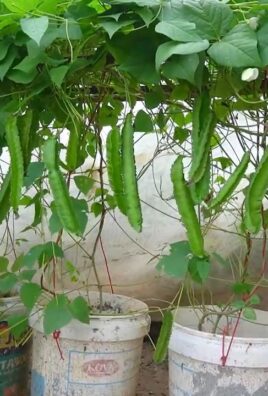
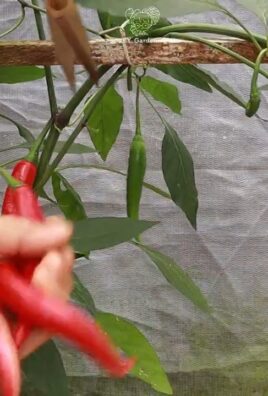
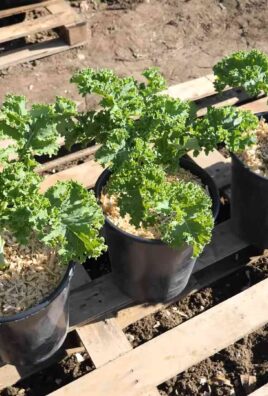
Leave a Comment